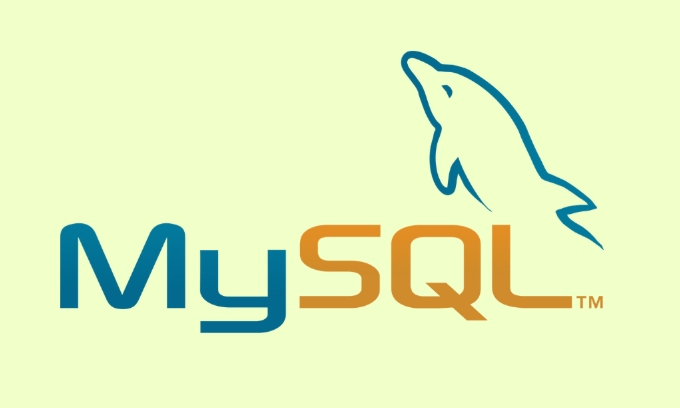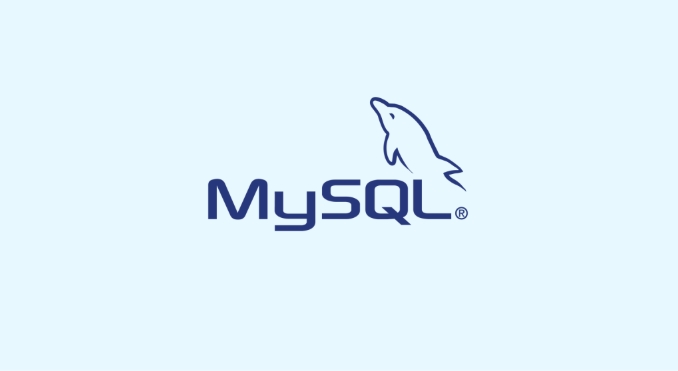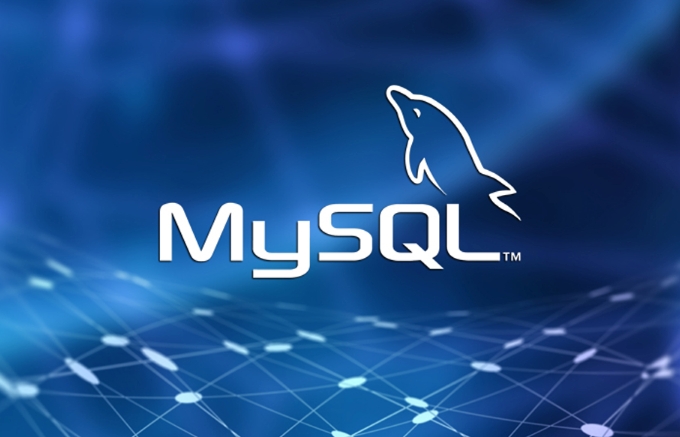MySQL service fails to start on a Mac, usually related to configuration, permissions, or port conflicts. 1. First check the log file (the default path is /usr/local/var/mysql/your-mac-name.err) to see if there are error messages such as "Bind on TCP/IP port: Address already in use" or "Can't open and lock privilege tables"; 2. If it is a port occupancy problem, you can use lsof -i :3306 to find the process that occupies port 3306 and end the process with kill -9 PID; 3. If it is a permission problem, you need to ensure that the current user has read and write permissions to the data directory. If necessary, use mysqld --initialize to reinitialize the data directory and record the temporary password; 4. If the startup fails through brew services, you can try to reset the service status: brew services stop mysql, launchctl list | grep mysql, launchctl remove [service_name], and then execute brew services start mysql to restart the service.

The MySQL service fails to start on a Mac, usually related to configuration, permissions, or port conflicts. If you encounter the problem of "MySQL server not starting on Mac", the following troubleshooting methods and solutions should help you find the cause and fix it.

Check MySQL log files
Logs are the most direct source of clues. The default log path of MySQL on Mac is usually /usr/local/var/mysql/ , and there will be a log file ending with .err , such as your-mac-name.err .

Open this file and see if there is any information similar to the following:
-
Can't start server: Bind on TCP/IP port: Address already in use -
Fatal error: Can't open and lock privilege tables
This information can tell you whether the port is occupied or the data table is damaged.

suggestion:
- If you see a port occupancy error, you can try changing the port or killing the occupied process
- If it is a permission-related issue, you may need to manually adjust the directory permissions
Port occupied or configuration conflicts
MySQL uses port 3306 by default. If a MySQL process has not exited completely, or another service (such as MySQL in Docker) also uses this port, it will cause a startup failure.
You can run this command to check port occupancy:
lsof -i:3306
If there is an output, the port is occupied. You can use the following command to force the process to end (replace PID with the actual process number):
kill -9 PID
Note: Don't kill uncertain processes casually, especially in production environments.
Permissions or data directory issues
MySQL needs to access its data directory when starting, and the default location is generally /usr/local/var/mysql . If the permissions of this directory are incorrect, or some critical files are missing, MySQL will not start normally.
Common phenomena:
-
ibdata1file not found - It is prompted that the data directory cannot be written
Solution:
Ensure that the current user has read and write permissions to the directory
You can try to reinitialize the data directory:
mysqld --initialize
After the initialization is completed, remember to view the generated temporary password, and you will use it for subsequent login.
Starting with brew services or launchd failed
Many Mac users use Homebrew to install MySQL and then start the service through brew services . Sometimes the service status is stuck, and even if you execute stop , it may not really stop.
Handling suggestions:
Reset the service status first:
brew services stop mysql launchctl list | grep mysql launchctl remove [service_name]
Restart the service again:
brew services start mysql
This can clean up some residual status information and avoid conflicts.
Basically, these common problems and solutions are all about them. Although there are many reasons for MySQL startup on Mac, it can be fixed most of the time through log location, and in combination with permissions, ports, configuration and other aspects.
The above is the detailed content of mysql server not starting on mac. For more information, please follow other related articles on the PHP Chinese website!

Hot AI Tools

Undress AI Tool
Undress images for free

Undresser.AI Undress
AI-powered app for creating realistic nude photos

AI Clothes Remover
Online AI tool for removing clothes from photos.

Clothoff.io
AI clothes remover

Video Face Swap
Swap faces in any video effortlessly with our completely free AI face swap tool!

Hot Article

Hot Tools

Notepad++7.3.1
Easy-to-use and free code editor

SublimeText3 Chinese version
Chinese version, very easy to use

Zend Studio 13.0.1
Powerful PHP integrated development environment

Dreamweaver CS6
Visual web development tools

SublimeText3 Mac version
God-level code editing software (SublimeText3)
 Connecting to MySQL Database Using the Command Line Client
Jul 07, 2025 am 01:50 AM
Connecting to MySQL Database Using the Command Line Client
Jul 07, 2025 am 01:50 AM
The most direct way to connect to MySQL database is to use the command line client. First enter the mysql-u username -p and enter the password correctly to enter the interactive interface; if you connect to the remote database, you need to add the -h parameter to specify the host address. Secondly, you can directly switch to a specific database or execute SQL files when logging in, such as mysql-u username-p database name or mysql-u username-p database name
 Handling character sets and collations issues in MySQL
Jul 08, 2025 am 02:51 AM
Handling character sets and collations issues in MySQL
Jul 08, 2025 am 02:51 AM
Character set and sorting rules issues are common when cross-platform migration or multi-person development, resulting in garbled code or inconsistent query. There are three core solutions: First, check and unify the character set of database, table, and fields to utf8mb4, view through SHOWCREATEDATABASE/TABLE, and modify it with ALTER statement; second, specify the utf8mb4 character set when the client connects, and set it in connection parameters or execute SETNAMES; third, select the sorting rules reasonably, and recommend using utf8mb4_unicode_ci to ensure the accuracy of comparison and sorting, and specify or modify it through ALTER when building the library and table.
 Implementing Transactions and Understanding ACID Properties in MySQL
Jul 08, 2025 am 02:50 AM
Implementing Transactions and Understanding ACID Properties in MySQL
Jul 08, 2025 am 02:50 AM
MySQL supports transaction processing, and uses the InnoDB storage engine to ensure data consistency and integrity. 1. Transactions are a set of SQL operations, either all succeed or all fail to roll back; 2. ACID attributes include atomicity, consistency, isolation and persistence; 3. The statements that manually control transactions are STARTTRANSACTION, COMMIT and ROLLBACK; 4. The four isolation levels include read not committed, read submitted, repeatable read and serialization; 5. Use transactions correctly to avoid long-term operation, turn off automatic commits, and reasonably handle locks and exceptions. Through these mechanisms, MySQL can achieve high reliability and concurrent control.
 Managing Character Sets and Collations in MySQL
Jul 07, 2025 am 01:41 AM
Managing Character Sets and Collations in MySQL
Jul 07, 2025 am 01:41 AM
The setting of character sets and collation rules in MySQL is crucial, affecting data storage, query efficiency and consistency. First, the character set determines the storable character range, such as utf8mb4 supports Chinese and emojis; the sorting rules control the character comparison method, such as utf8mb4_unicode_ci is case-sensitive, and utf8mb4_bin is binary comparison. Secondly, the character set can be set at multiple levels of server, database, table, and column. It is recommended to use utf8mb4 and utf8mb4_unicode_ci in a unified manner to avoid conflicts. Furthermore, the garbled code problem is often caused by inconsistent character sets of connections, storage or program terminals, and needs to be checked layer by layer and set uniformly. In addition, character sets should be specified when exporting and importing to prevent conversion errors
 Using Common Table Expressions (CTEs) in MySQL 8
Jul 12, 2025 am 02:23 AM
Using Common Table Expressions (CTEs) in MySQL 8
Jul 12, 2025 am 02:23 AM
CTEs are a feature introduced by MySQL8.0 to improve the readability and maintenance of complex queries. 1. CTE is a temporary result set, which is only valid in the current query, has a clear structure, and supports duplicate references; 2. Compared with subqueries, CTE is more readable, reusable and supports recursion; 3. Recursive CTE can process hierarchical data, such as organizational structure, which needs to include initial query and recursion parts; 4. Use suggestions include avoiding abuse, naming specifications, paying attention to performance and debugging methods.
 Strategies for MySQL Query Performance Optimization
Jul 13, 2025 am 01:45 AM
Strategies for MySQL Query Performance Optimization
Jul 13, 2025 am 01:45 AM
MySQL query performance optimization needs to start from the core points, including rational use of indexes, optimization of SQL statements, table structure design and partitioning strategies, and utilization of cache and monitoring tools. 1. Use indexes reasonably: Create indexes on commonly used query fields, avoid full table scanning, pay attention to the combined index order, do not add indexes in low selective fields, and avoid redundant indexes. 2. Optimize SQL queries: Avoid SELECT*, do not use functions in WHERE, reduce subquery nesting, and optimize paging query methods. 3. Table structure design and partitioning: select paradigm or anti-paradigm according to read and write scenarios, select appropriate field types, clean data regularly, and consider horizontal tables to divide tables or partition by time. 4. Utilize cache and monitoring: Use Redis cache to reduce database pressure and enable slow query
 Designing a Robust MySQL Database Backup Strategy
Jul 08, 2025 am 02:45 AM
Designing a Robust MySQL Database Backup Strategy
Jul 08, 2025 am 02:45 AM
To design a reliable MySQL backup solution, 1. First, clarify RTO and RPO indicators, and determine the backup frequency and method based on the acceptable downtime and data loss range of the business; 2. Adopt a hybrid backup strategy, combining logical backup (such as mysqldump), physical backup (such as PerconaXtraBackup) and binary log (binlog), to achieve rapid recovery and minimum data loss; 3. Test the recovery process regularly to ensure the effectiveness of the backup and be familiar with the recovery operations; 4. Pay attention to storage security, including off-site storage, encryption protection, version retention policy and backup task monitoring.
 Optimizing complex JOIN operations in MySQL
Jul 09, 2025 am 01:26 AM
Optimizing complex JOIN operations in MySQL
Jul 09, 2025 am 01:26 AM
TooptimizecomplexJOINoperationsinMySQL,followfourkeysteps:1)EnsureproperindexingonbothsidesofJOINcolumns,especiallyusingcompositeindexesformulti-columnjoinsandavoidinglargeVARCHARindexes;2)ReducedataearlybyfilteringwithWHEREclausesandlimitingselected






